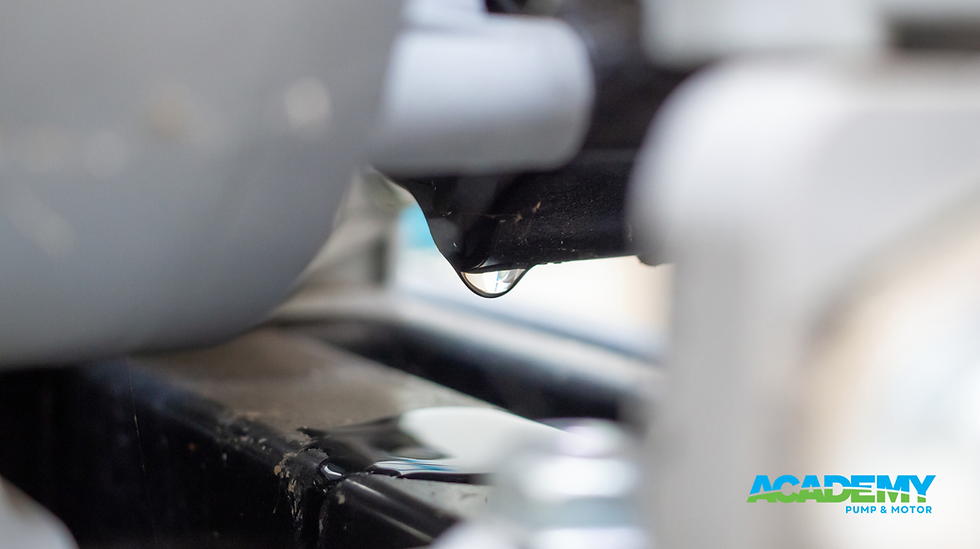Submersible Pumps: Innovations in Efficiency and Reliability
- Lincoln Jones

- Jul 19, 2024
- 2 min read
Submersible pumps may operate out of sight, but their impact on modern water management and industrial processes is unmistakable. From enhancing efficiency in agriculture to ensuring reliable wastewater management, these pumps quietly play a crucial role in everyday operations across various sectors. Let's explore why submersible pumps are the go-to solution for efficient fluid transfer in today's industries.

In the world of water management and industrial applications, submersible pumps have revolutionized how we handle water transfer, drainage, and wastewater management. These versatile pumps, designed to operate submerged in fluid, offer unparalleled efficiency, reliability, and durability across various sectors. Let's explore how submersible pumps are shaping the landscape of pumping technology today.
What are Submersible Pumps?
Submersible pumps are specially designed to be submerged in water or other fluids during operation. Unlike traditional pumps that are installed above ground and rely on suction to draw fluid, submersible pumps push fluids to the surface. Key components include a hermetically sealed motor close-coupled to the pump body, ensuring efficient transfer and minimal energy loss.
Applications Across Industries
Municipal Water Supply: Submersible pumps play a crucial role in municipal water supply systems, facilitating the efficient transfer of water from wells, reservoirs, and water treatment plants to distribution networks.
Wastewater Management: In wastewater treatment plants, these pumps handle raw sewage and effluent with ease, reducing the risk of clogging and ensuring continuous operation.
Agriculture: Farmers rely on submersible pumps for irrigation, providing a steady supply of water to fields and crops, enhancing agricultural productivity.
Construction and Mining: Submersible pumps are used for dewatering purposes in construction sites and mines, effectively managing groundwater and preventing flooding.
Advantages of Submersible Pumps
Efficiency: By operating directly in the fluid being pumped, submersible pumps eliminate the need for priming and reduce energy consumption compared to surface pumps.
Reliability: Submersible pumps are less susceptible to cavitation (the formation of vapor bubbles in the fluid), ensuring consistent performance and minimal maintenance.
Space-saving: Their compact design and submerged installation save space and reduce noise compared to traditional pumps.
Durability: Constructed with corrosion-resistant materials such as stainless steel, submersible pumps are built to withstand harsh environments and prolonged use.
Innovations Driving Efficiency
Recent advancements in submersible pump technology continue to enhance their efficiency and functionality:
Variable Frequency Drives (VFDs): VFDs optimize energy usage by adjusting motor speed according to demand, reducing operating costs and extending equipment lifespan.
Sensor Technology: Integrated sensors monitor pump performance, temperature, and vibration, providing real-time data for proactive maintenance and minimizing downtime.
Material Improvements: Advanced materials such as ceramics and composite materials enhance pump durability and resistance to abrasion and corrosion.
Environmental Considerations
Submersible pumps contribute to sustainability efforts in several ways:
Energy Efficiency: Reduced energy consumption and lower carbon emissions compared to traditional pumps contribute to environmental conservation.
Water Conservation: Efficient water transfer and management help conserve valuable water resources, especially in arid regions.
Submersible pumps represent a cornerstone of modern pumping technology, offering unparalleled efficiency, reliability, and versatility across diverse applications. As industries continue to evolve and environmental concerns grow, the role of submersible pumps in sustainable water management becomes increasingly crucial. With ongoing innovations driving performance improvements, these pumps are poised to continue shaping the future of water management and industrial applications worldwide.



Comments